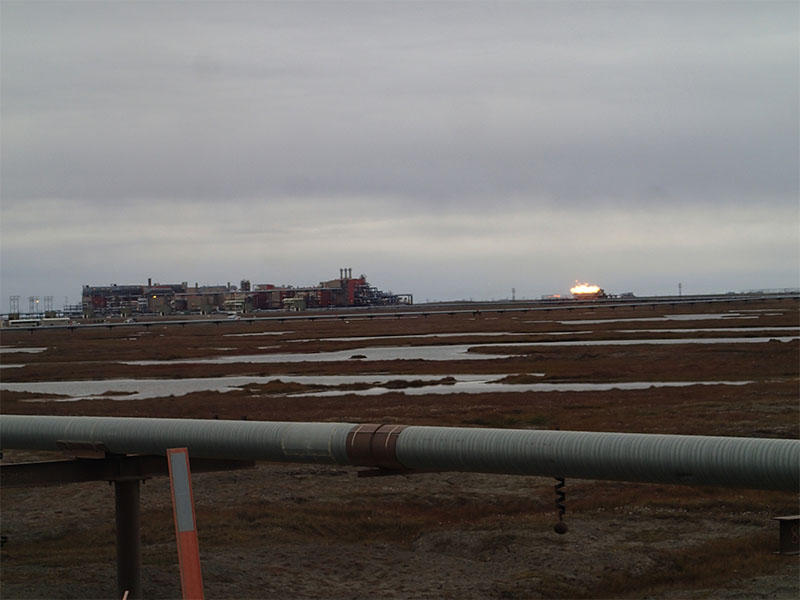
By Bradley W. Barr, Ph.D., NOAA Office of National Marine Sanctuaries Maritime Heritage Program, Co-Principal Investigator and Chief Scientist
August 8, 2015

A view of the industrial landscape of Prudhoe Bay. Image courtesy of NOAA/ONMS/Matthew Lawrence. Download larger version (jpg, 1.7 MB).
After a long but largely uneventful flight, the mission team arrived in Prudhoe Bay, Alaska, where we were to meet the boat. An oversight by the company from which we had arranged to rent a truck to carry ourselves and 1,366 pounds of equipment to the dock left us stranded at the airport for a few hours. We were rescued by one of our soon-to-be charter captains, who had local contacts and met us with a truck and useful local information that helped us to navigate this unfamiliar terrain.
Prudhoe Bay is an extensive industrial landscape on the Alaskan tundra, the current center of oil production in the U.S. Arctic. To someone who has spent a good portion of his career thinking about wilderness, and the Arctic as an exemplar of wilderness, this place deeply conflicts with my preconception of what the Arctic should be. To be sure, it is tundra, but consists of what are called “pads” (literally, platforms constructed on the tundra) that support massive structures, drill sites, and maintenance areas, all connected with a spider’s web of bright silver pipelines. It was to me, somewhat otherworldly.
The boat, the R/V Ukpik, is berthed at West Dock, which is also home port to many oil spill response and cleanup vessels. While not much of a pier, just a barge connected to the shoreline with a ramp, it served its purpose.
After more than 24 hours of travel, a visit to the freight terminal to pick up our 19 crates of equipment, a 45-minute drive through the oil field to the dock, and some heavy lifting to get the gear on the Ukpik, we had finally arrived, anticipating the journey through the Beaufort Sea...after a good night’s rest on the Ukpik.